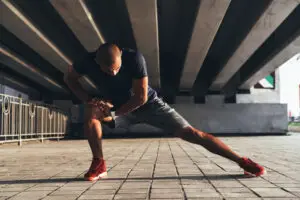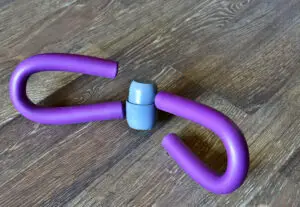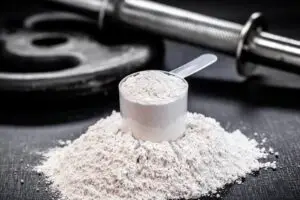Are you looking for a great, high intensity exercise that works a lot of your body at once? Jumping rope might be something you want to incorporate into your workout, but what does jumping rope work on? Which muscle groups does it challenge, activate and develop?
There may be specific parts of your body you want to target when you work out, so you might be wondering if jumping rope is worth incorporating into your workout sessions.
We’re going to dive into what jumping rope does for you, how it works your body in different ways, and the benefits it offers. Then, you can decide if it might be worth adding to your exercise regimen.
Proper Form Is Essential
No matter what kind of exercise you’re doing, having the right form is very important. This is what determines how effective the exercise is, whether you’re doing it properly, and if you’re getting all the benefits you should get. The proper form also ensures that you protect yourself from risks.
If you’re jumping rope in the wrong way, you could put yourself at risk for injury, so knowing how to do it properly is very important.
If you’re constantly tripping when you’re jumping rope or you don’t feel very comfortable doing this exercise, it’s possible that you’re not doing it the right way.
I would advise watching videos of how experts jump rope, and that will give you an idea of what you might be doing wrong.
You can watch yourself in a mirror to compare yourself to what you see on the screen, and this can point out any flaws to you that you may have missed in the way that you jump rope.
Does Jumping Rope Work the Calves?
A lot of strength workouts miss the calves, but jumping rope works those muscles. In fact, jumping rope will work your calves more than any other muscle group.
It works two separate muscles- the soleus muscles and the gastrocnemius muscles. Jumping rope will benefit the connective tissues around your calf muscles by boosting their elasticity.
That gives you greater power and reduces your risk of becoming injured.
The calves are what give your ankles the power to extend as you jump. You need strong calves to be able to jump rope quickly and effectively, and this exercise is one of the best ways to build calf muscles.
What you find is that the more you jump rope, the easier it is to jump higher and keep going for longer.
If you want to really build up your calf muscles as you jump rope, you want to pay close attention to how you prepare for your push off from the ground.
When you land on your feet, aim to land on the balls on feet. From there, bring your heels down to the ground completely before you jump the next time.
Does Jump Rope Build Your Core?
You might think that jumping rope is just working on your lower body, but it’s an excellent exercise for developing your core strength. Jumping rope requires engagement from your core and boosts ankle development. It also strengthens your core so that you can jump rope more easily as you continue practicing.
You want to engage your transverse abdominis, which is the closest core muscle to the center of your body. This is a thin abdominal muscle sheet located next to your internal abdominal obliques. It helps to support the entire lumbopelvic region.
To engage this muscle properly, make sure that you keep your core rigid and straight. This will send power between the upper and lower portions of your body and minimize the impact on your back. As I mentioned earlier in the article, it’s very important that you have the right form so that you don’t cause yourself a back injury or some other problem.
How Does Jump Rope Help Your Back?
Yes, doing jump rope improperly can cause you back injury, but with the right form, it can strengthen your back. The power it takes to jump rope will benefit your back and shoulders, and poor form means they won’t be impacted much.
To ensure you have the right form, make certain that your shoulders are kept firm. Keep your scapula pinned, and you will start noticing benefits to your rotator cuffs, deltoids and your rhomboids.
If you want to really work your upper body and develop those muscles in the shoulder and back, then you should use a weighted jump rope.
This will make you exert yourself a lot more, pulling those muscles and forcing them to have more microtears that result in great muscle development.
Improved shoulder strength is important, especially for reducing your injury risk and for playing high intensity sports. Shoulder strength is vitally important for people who play basketball, volleyball, tennis, and baseball.
Use the jumping rope to build up your shoulder strength and to boost your throwing capabilities. Your aim will be steadier and you will achieve greater distance.
Does Jumping Rope Strengthen your Arms?
Jumping rope can be beneficial to your arm muscles as well. It is a decent strength training exercise that improves grip strength and forearm power. It works your finger flexors as well, since you will be using them to hold on tightly to your jump rope as you work out.
Having a strong grip benefits you in a number of ways, improving your ability to weight lift while reducing your risk of slipping and dropping the weights. It also helps you to be surer when you play sports that require you to handle a ball, bat or racquet.
Having strong finger flexors means you will more easily perform deadlifts, carries, and chin-ups when you work out.
Jumping rope is going to benefit your entire exercise regimen, developing muscles that don’t always get the attention that they need.
Additional Jumping Rope Benefits
You might think that you are only working your lower body and specifically your legs when you jump rope, but it does so much more than that. Jumping rope gives you power and increases your flexibility and agility.
It improves your ability to run and to be agile, and you can imagine how that might benefit you if you need to go through obstacle courses, like those that are a part of military and police training.
The benefits extend to playing sports and even to your everyday life. Jumping rope helps to make you steadier on your feet, giving you greater balance and stability.
You are less likely to trip and fall, and you will have more confidence in your movement. This can be a challenging exercise to do, so incorporating it into your workout regimen can be so good for you in a lot of ways.
Jumping rope can be high intensity as well. It can be an excellent form of cardio, benefitting your heart health, lung capacity and your endurance.
You will find yourself able to exercise for longer and push yourself further as you jump rope regularly. If it is not part of your exercise routine already, then you should consider adding it.
If you jump rope already, perhaps now you have some extra incentive to keep on doing it, knowing the bountiful benefits that it offers you.
If you don’t feel confident doing jump ropes at your stage of physical fitness, then just start them off low and slow. Take your time and only try to jump rope for short periods of time at once.
This way, you will gain the confidence and agility needed to do this exercise effectively. Work on building up your leg strength so that you can jump over the rope easily, and pretty soon you will have the skills needed to jump rope well.
My name is Ellis Francis and I have been a personal fitness trainer, sports nutritionalist and health and fitness advisor for over 25 years. I am the lead health and fitness advisor at https://awellnessbody.com.







